 With the cold and wet weather we have been experiencing in southern Spain since the clocks went back, people are turning their thoughts to heating their houses.
With the cold and wet weather we have been experiencing in southern Spain since the clocks went back, people are turning their thoughts to heating their houses.
The DIY guy has spent the last quarter of a century living in the Serrania de Ronda, 16 of those as a resident. He reports that it can be extremely cold from November to February.
The DIY guy was a bit miffed when the Conservative government took away his winter heating allowance. He remained eligible to receive it when he moved to Spain, but the Tories withdrew it for anyone living south of a random horizontal line drawn across France.
Winter temperatures in the valley below Ronda where the DIY Guy now lives have been as low as MINUS 16 DEGREES CELSIUS and he reports that he has to scrape ice off his car windscreen every morning from November to February – every year.
Now the Labour Government is about to withdraw the winter heating allowance from most UK pensioners who receive it currently. Plus ça change, eh?
During the 25 years The DIY Guy has lived in Spain, he has occupied a number of properties in the Ronda area: a modern apartment; four old houses - two in Ronda and two in nearby Montejaque; and a modern chalet bungalow in the campo.
Here’s his report:
Preface
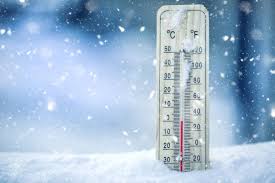 The heating in each place I’ve lived in Spain was different, but I have to report that the easiest to heat and keep warm were the old houses, with their thick external walls and tiny windows.
The heating in each place I’ve lived in Spain was different, but I have to report that the easiest to heat and keep warm were the old houses, with their thick external walls and tiny windows.
But, let’s start at the beginning:
Photo courtesy of iStock
Piso Blanco, Ronda
 This was the first property we bought in Spain, back in 2001. Located in the sought-after Barrio San Francisco, it was a modern apartment in a comunidad of 10 dwellings with gardens and a pool.
This was the first property we bought in Spain, back in 2001. Located in the sought-after Barrio San Francisco, it was a modern apartment in a comunidad of 10 dwellings with gardens and a pool.
Great in the summer, but bloody cold in winter. We came for Christmas a couple of times, and, after my redundancy and divorce, I spent increasing amounts of time living in Piso Blanco, which I retained after our divorce in 2005.
Piso Blanco, Ronda [Photo: Paul Whitelock]
The apartment had gas central heating, but it was single-glazed with ill-fitting pine windows and, madre mía, it was bitter cold. Piso Blanco also benefited from a traditional brasero beneath a round wooden table, over which you placed a thick tablecloth/blanket which reached to the floor. Great for warm legs, but cold backs!
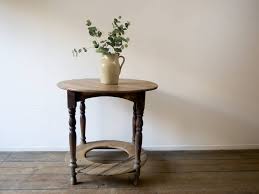

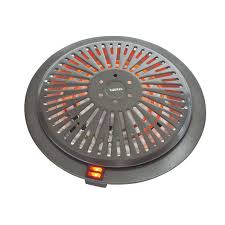
Traditional tables with space for a brasero [Photos: The Vintage Rooms] An electric brasero [Photo: Amazon]
Casa Blanca, Ronda
This house was an end-terrace bungalow, not 50 metres from Piso Blanco. It had a SE VENDE sign on it, but it looked pretty dilapidated. My mum, Vera, who was staying with us in Piso Blanco at the time, pushed at the front door and it swung wide open!
A quick look around to see if anyone was watching – no, all clear – so we slipped inside.
Part of the lounge floor had collapsed, and the bathroom and kitchen were a mess. Outside, what had probably been a large terrace, had become a dumping ground for the locals’ rubbish over many years.
Mum did one of her little smiles and winked at me. She liked it. She and my late dad had done up a few houses in their time.
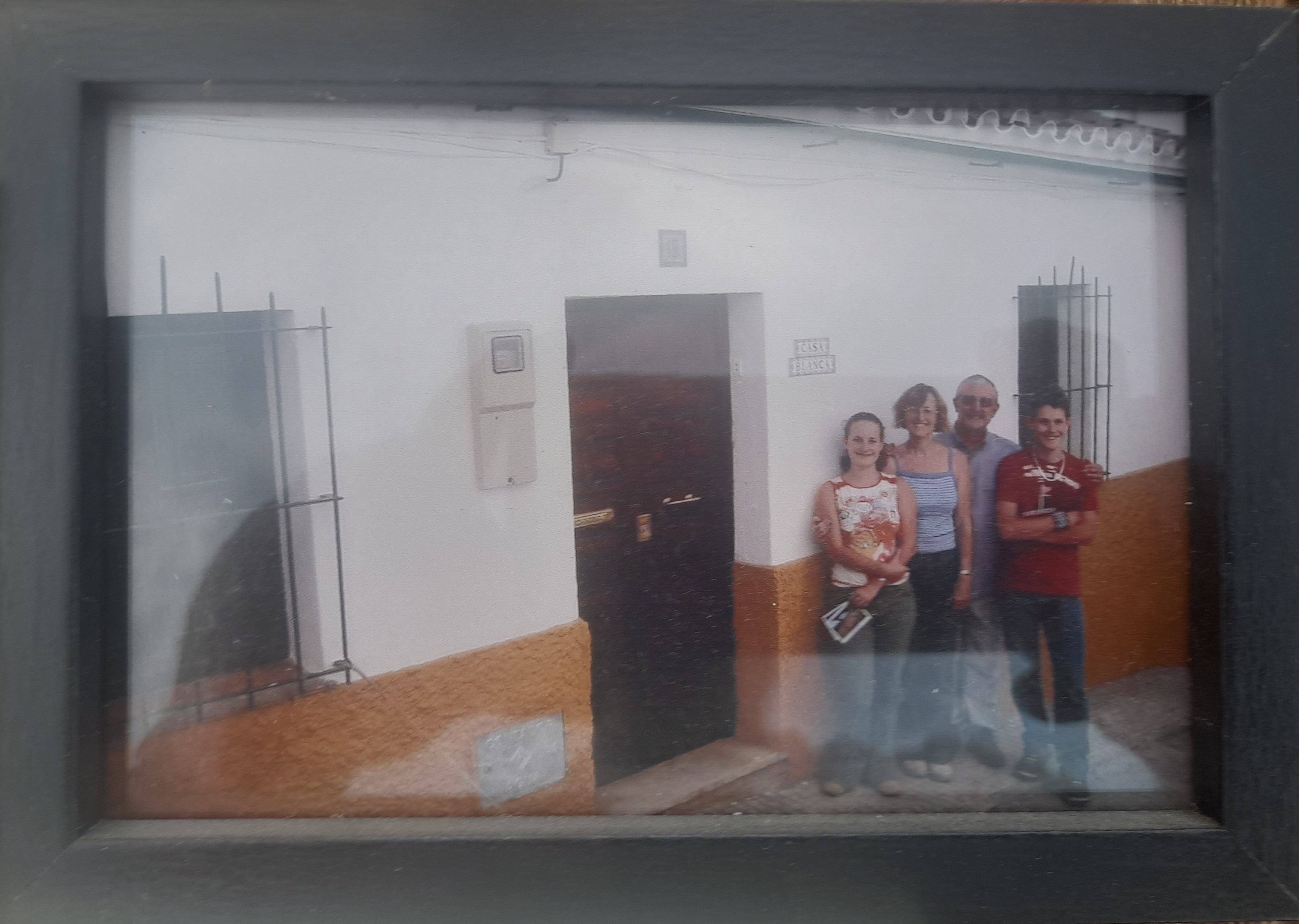 So, with mum’s approval and less enthusiastic support from my wife, Jeryl, we set about investigating further.
So, with mum’s approval and less enthusiastic support from my wife, Jeryl, we set about investigating further.
The house belonged to Paco and Paqui who owned and ran Bodega San Francisco in the Barrio, one of our regular haunts.
Long story short, we bought the house, for not much money really, and over the next couple of years, with the help of family and friends, we gutted it and did it up.
Amy, Jeryl, The DIY Guy and Tom outside Casa Blanca
[Photo: Johnny White]
As for heating, there was no fireplace, so we relied on a mixture of oil-filled electric radiators and electric fires. It was freezing in the winter months.
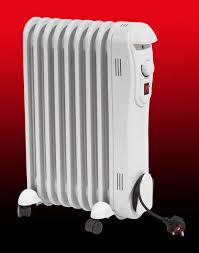
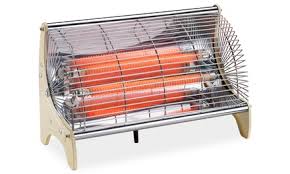
Photo: TLC Heating Supplies Photo: Groupon
El Rincón, Ronda
By 2005 I was divorced and early-retired (55) and with a new lady, Maude. to "step out with". On a long weekend in Ronda – Maude's first-ever visit to the City of Dreams – she bought a little old house, which was charming but rather down-on-its-luck!
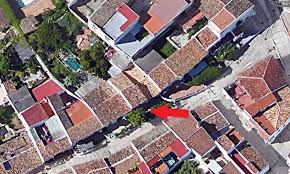
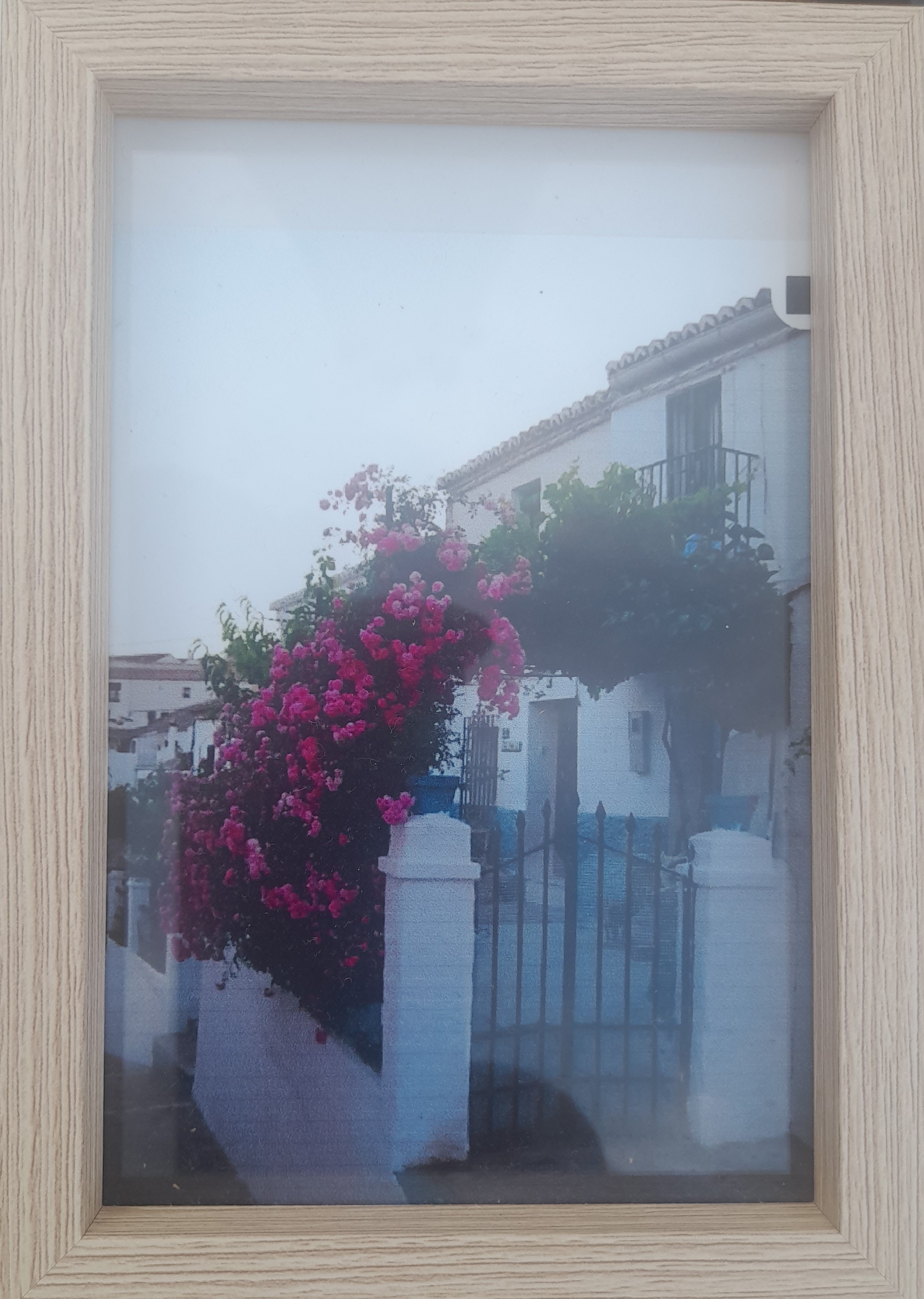
Aerial view of El Rincon, Ronda [Photo: Google Earth] Entrance to El Rincon [Photo: PW]
Guess what? I was retired and she was still working, so I ended up spending months at a time in Ronda, doing up her house and garden. I didn’t mind, however. I’d fallen in love with Spain when I was 20. I was now 55, and that love had not diminished one bit.
(awaiting photo)
The DIY Guy laying a garden terrace [Photo: Mary Jackson]
During these periods I built myself a decent social life in Ronda, so had no complaints at all.
Heating in El Rincón was non-existent. We had to manage with electric radiators and fires, but because it was a terraced-house and the front and rear walls were half-a-metre thick, it was tolerable.
Casa Rita, Montejaque
This was the house of the German lady I met in Ronda in September 2008. Rita and I soon fell in love. She visited me in England a few times that autumn and I went to Germany for her grandson’s christening. By Christmas I had emigrated to Spain.
 Casa Rita was Rita’s home having left Germany a few years before. It was well appointed, had a great chimenea and gas stoves. The house was old and had thick external walls. It was cosy in the winter and cool in the summer.
Casa Rita was Rita’s home having left Germany a few years before. It was well appointed, had a great chimenea and gas stoves. The house was old and had thick external walls. It was cosy in the winter and cool in the summer.
Rita and I have now been married for 14 years and no longer live there, although we go and stay from time to time.
During the Covid lockdowns we took the time to upgrade the house. New double-glazed windows throughout, wall heaters in the two bathrooms and a pellet stove in the open-plan lounge we had created downstairs. There are still a couple of gas stoves as back-up. Casa Rita is now “as warm as toast”.
Rita posing on the roof terrace of Casa Rita [Photo: Karl Smallman]
***
After we got married in 2010 we started looking round for a house with better access, a pool and a garden. We found “just the job” in Fuente de la Higuera, in the campo just outside Ronda. We moved in on 3 February 2011 on a bright sunny Saturday.
Villa Indiana, Fuente de la Higuera
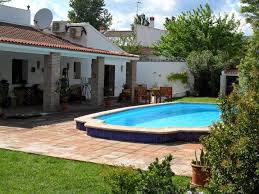
Villa Indiana view from rear [Photo: Karl Smallman]
Within a couple of weeks of moving in it was pouring down and freezing cold. Our garden and lawns were flooded. Aargh!
 The heating seemed quite sophisticated. There was oil-fired central heating throughout and a chimenea in the lounge. The windows and doors were high-quality double-glazed units
The heating seemed quite sophisticated. There was oil-fired central heating throughout and a chimenea in the lounge. The windows and doors were high-quality double-glazed units
BUT, BUT, BUT …..
Villa Indiana is a modern house with only 9-inch solid external walls, no insulation in the roof, no damp-proof course and larger-than-normal windows, so, warm and cosy it ain’t!
But we manage when it’s very cold. A thick jumper usually does the trick.
Photo courtesy of Roferi and Rodi
***
I had sold Casa Blanca in Ronda in 2008 to help finance the purchase of a house for me to live in in England. My relationship with Maude had ended, so I had left North Wales and had moved in with my mum in Warrington.
 I decided I needed a place of my own, so bought a detached Victorian villa in Latchford, a suburb of Warrington, as a do-er up-per.
I decided I needed a place of my own, so bought a detached Victorian villa in Latchford, a suburb of Warrington, as a do-er up-per.
I completed the purchase of Tunstall Villa around the time I met the “Lovely Rita”.
Despite emigrating to Spain in December 2008 to be with Rita, I went back to Warrington to work on my house for several lengthy periods over the next three years.
Tunstall Villa, Latchford [Photo: On The Market]
When Tunstall Villa was finished, I sold it to pay for Villa Indiana, the house we had found just outside Ronda, as outlined above.
***
In 2019 I decided to sell Piso Blanco, which I had owned for some 18 years by that  time. It needed some urgent work, and I had neither the money nor the inclination to do it.
time. It needed some urgent work, and I had neither the money nor the inclination to do it.
I banked the money from the sale of Piso Blanco and watched as it earned virtually zero interest for two years.
Then, one Sunday I was in Montejaque and I stumbled across a house with a SE VENDE sign. It turned out that it was owned by my favourite bar owner in the village, Armando, and his three siblings.
I viewed the house, liked it and bought it for a good price.
The heating consists of a pellet stove in the open-plan lounge, dining room and kitchen, plus portable gas heaters. I ran the flue of the pellet stove through one of the bedrooms upstairs, which takes the chill off that room.
Casa Real, Montejaque [Photo: Karl Smallman]
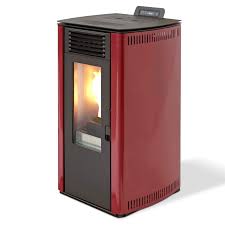
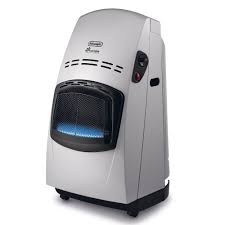
A pellet stove [Photo: Climmatic] A gas stove [Leroy Merlin]
Casa Real is not cold in the winter. With the pellet stove, double-glazed windows and back-up gas stoves, added to the half-metre thick external walls, it is not a cold house, despite being some 800 metres above sea level.
Last word
Although I am now well into my 70s, I hanker after another building project. To have the funds to do that, however, I would have to sell Casa Real and run the risk of Rita divorcing me!
So, it looks like it’s time to hang up my trowel, my hammer and my drill, don my slippers and sit by the fire, watching TV and stroking the pussy.
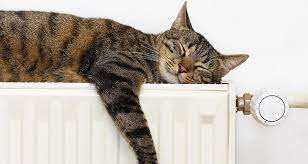
Photo courtesy of Halifax BS
© The DIY Guy

Related Links:
CASA REAL, Montejaque (Malaga) - Help me, Ronda
CASA RITA, MONTEJAQUE - An immaculate fully renovated 3-bed, 3-bath property - 200,000€. - Help me, Ronda
HOW TO ….. get your HOUSE WARM?
How to keep a Spanish house warm in Winter « Euro Weekly News
Acknowledgements:
EuroWeekly News
Johanna Gardener
Paul Whitelock
www.help-me-ronda.com
www.secretserrania.com
Photos:
Amazon
Climmatic
Facebook
Google Earth
Groupon
Halifax Building Society
iStock
Johnny White
Karl Smallman
Leroy Merlin
Mary Jackson
On The Market
Paul Whitelock
Roferi and Rodi
TLC Heating Supplies
The Vintage Rooms
Tags:
9-inch solid external walls, Amazon, “as warm as toast”, Barrio San Francisco, Bodega San Francisco, Casa Blanca, Casa Real, Casa Rita, chimenea, Climmatic, Covid, damp-proof course, double-glazed units, double-glazed windows, Durazno, electric fire, El Rincon, Facebook, fireplace, Fuente de la Higuera, gas stove, Google Earth, Groupon, half-metre thick external walls, Halifax Building Society, Help Me Ronda, insulation in the roof, iStock, Jeryl, Johnny White, Karl Smallman, larger-than-normal windows, Latchford, Leroy Merlin, lockdown, “Lovely Rita”, Lucero, Mary Jackson, Maude, Montejaque, oil-filled electric radiator, oil-fired central heating, On The Market, Paul Whitelock, pellet stove, Piso Blanco, pussy, Roferi and Rodi, Ronda, Serrania de Ronda, SE VENDE, TLC Heating Supplies, The DIY Guy, The Vintage Rooms, thick external walls, Tunstall Villa, Victorian villa, Villa Indiana, wall heater, Warrington, winter heating allowance